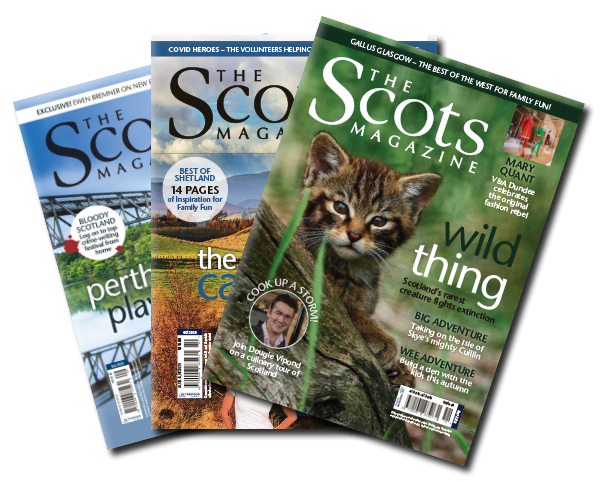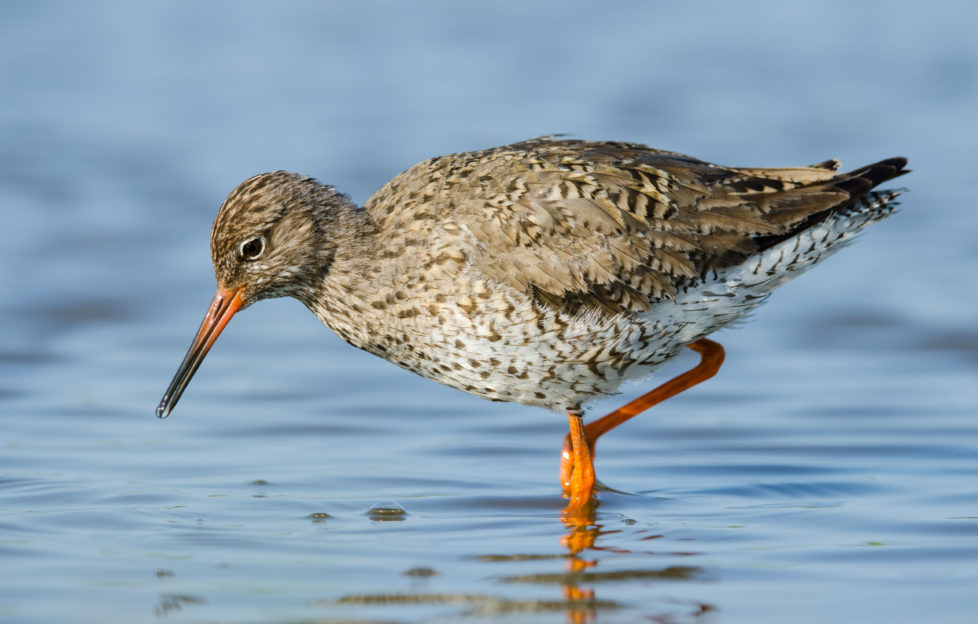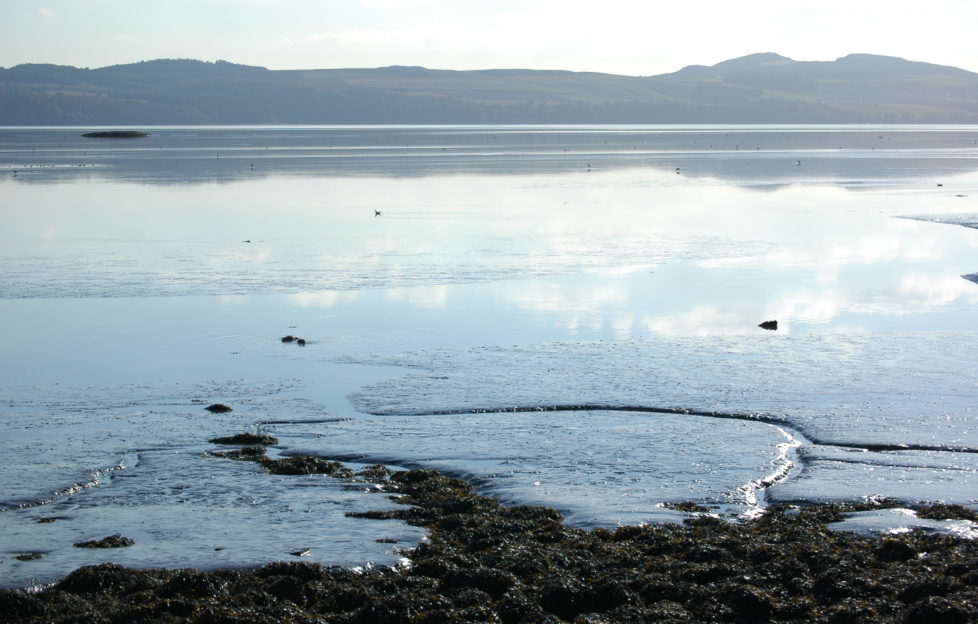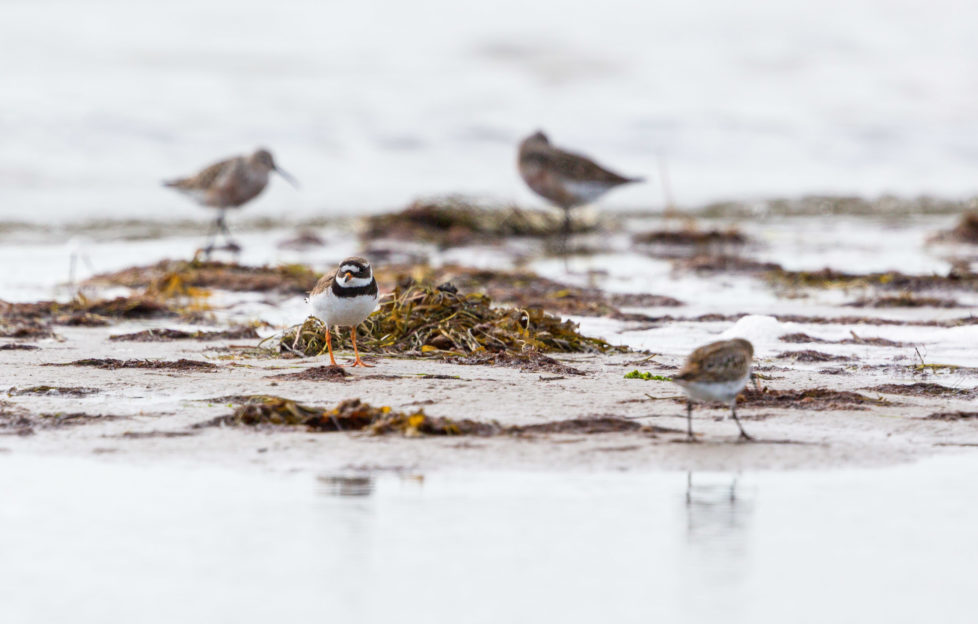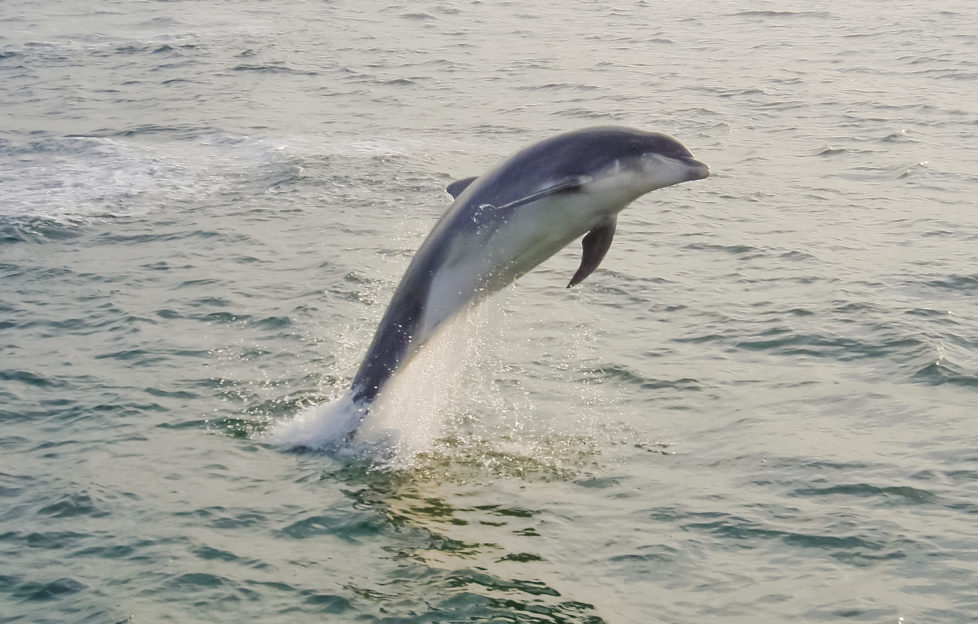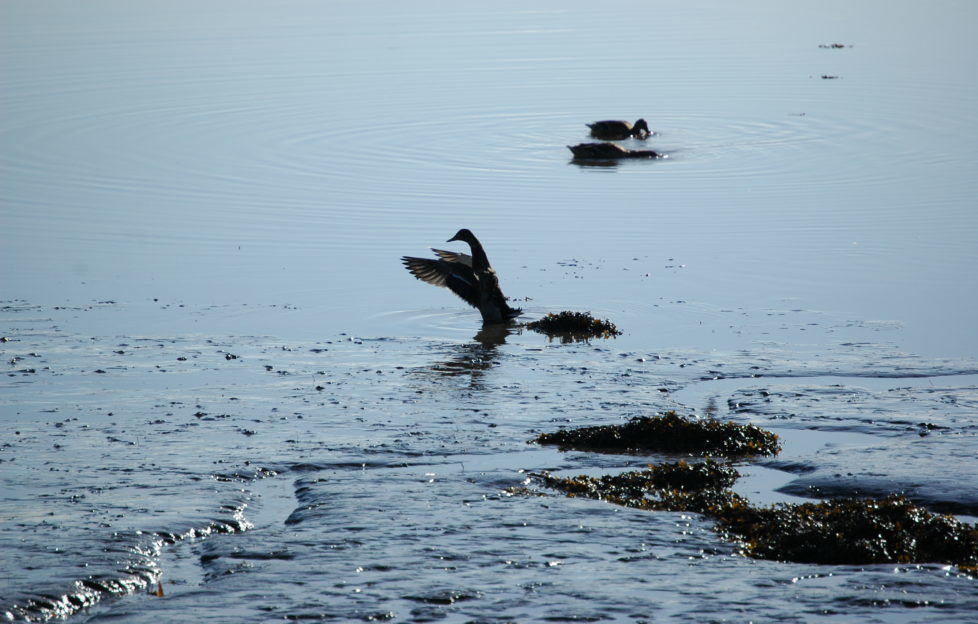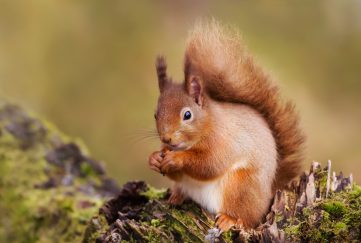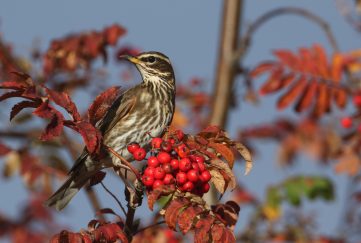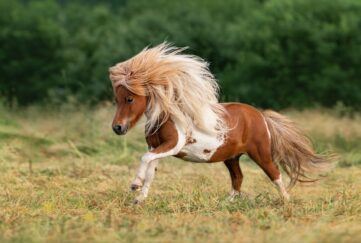Life At The Water’s Edge
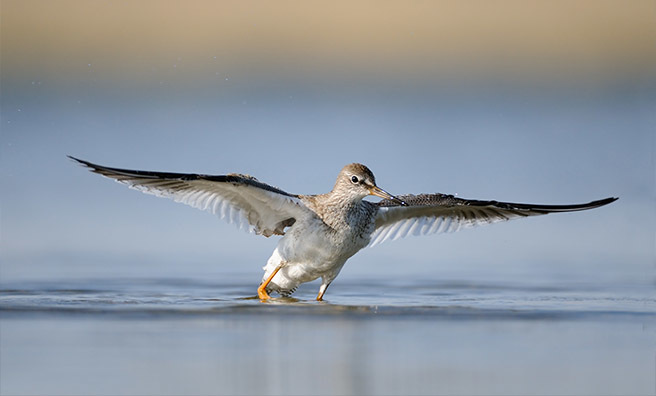
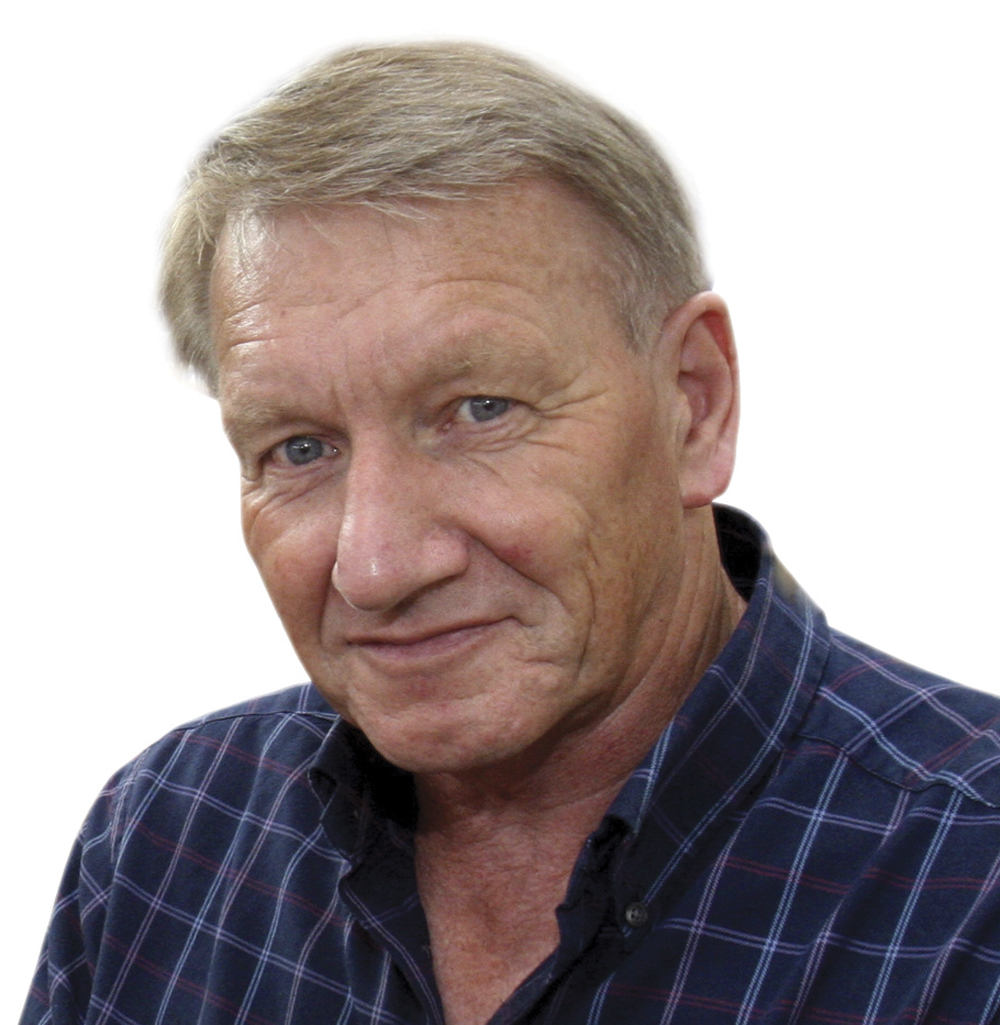 The peaceful Tay estuary is, in reality, a very busy place that Jim Crumley never gets tired of visiting
The peaceful Tay estuary is, in reality, a very busy place that Jim Crumley never gets tired of visiting
Kingoodie at low tide on a cold afternoon of stillness and sunlight is one of my favourite states of mind. If Kingoodie furrows a frown of unrecognition on your brow, it may be because you didn’t grow up on the north shore of the Tay estuary. Unlike me – Kingoodie and I go back a long, long way.
My first home was the last street on the western edge of Dundee before you hit the fields. On a bike, it was a hairy white-knuckle downhill breenge from the front door to the Perth Road, a couple of miles west to Invergowrie, over the railway, and the next stop was a cluster of houses on one side of the road, and on the other an overgrown, likeably decrepit pier, beyond which there was such a vast acreage of tidal mud that the idea of half an hour with a pair of binoculars and a notebook was inclined to drift effortlessly into half a day.
So it was then, so it still is. Dundee may have flexed its muscles and thrust its empire westwards since then, but Invergowrie in my mind is still where everything stops, and Kingoodie is still where the rest of the world begins.
One day I may try and write down in a book the significance of the River Tay in my life. But the fact that I have put it off thus far during these last twenty-five years of that life when I have been writing books about almost everywhere else in the land, suggests that it might be beyond me.
Yet I still divert from journeys to other landscapes fed by lesser rivers (they’re all lesser rivers!) to honour this, the auldest of auld acquaintance, and to sit on a rock with my wellies in the mud, my binoculars in my hand and a notebook in my lap for half a windless hour that spills beyond time into a half a day…
McGonagall was right. Silvery is the word.
McGonagall lived in Dundee, so he looked at the river from the north, facing into the sun, that sun that is forever blazing the silveriest of trails across the Tay.
In Fife, they must have a different word for it, a different way of looking at the water, but then if you grew up in Dundee you are inclined to think that Fife had a different way of looking at everything. It should be acknowledged that the converse is also true.
The lower the sun, the silverier the Tay. In these midwinter low-tide afternoons, even mud is silver. I come, of course, for the birds.
This much mud in such a mighty, healthy river is a layered banquet table for waders. The reach of every shape and shade of wader bill that ever probed mud for a living is catered for here from the tiny stubs of ringed plovers and sanderlings to the fire-shaded lances of oystercatchers and the sabres of curlews.
And duck bills. The nearest birds are mallards, a little cluster of five on a cramped raft of rock afloat in a sea of silvery mud. They look black, of course.
A solitary drake has decided to walk to the rock from the puddle where he has been feeding. His feet slap the mud and slither at every step. It’s like watching a swan on ice, only much, much dirtier. He uses his wings to stay upright, but it never occurs to him to fly. The fifty yards of his journey consume a small eternity.
Something admirably untameable…
A thin tui-tui voice alerts me to the arrival of a solitary redshank. There is a wide expanse of two-inches-deep water off to my right and it has perched right on the edge. There is enough space where it stands for perhaps (my hasty guess) 20,000 redshanks but there is only one.
The isolation of the bird in that miles-wide no-man’s land of mud and distant water where the river still courses seawards in mid-channel is curiously affecting. The bird calls again. The sound has the quality of a distant echo, though the bird is not distant and the properties of mud do not include voice enhancement, but I still find something admirably untameable there, as though it stands for all the bird cries of all time.
For there is a timelessness about estuaries. The ritual march of tides is as predictable as it is unstoppable, its transformative effect on the riverscape is the constant that measures not just the passage of days and nights in six-hour bites, but it also beats out the rhythms of years, decades, centuries, millennia, aeons.
Only ice ages demand stillness of tides. The solitary redshank’s pause on the Kingoodie mud is an apostrophe on the Tay’s page in all the unwritten story of our land. Its voice is a breath of all the winds that ever blew here, its brief stillness is the stillness of slack water at the turn of every tide.
I think we feel differently about landscapes we’ve known all our lives. The passage of our own lifetime is a mirror we can hold against the lifetime of the landscape. We cannot grasp the entire life story of a landscape so we home in on its solitary ambassador, and glean what we can there. It is a process that has a way of helping me to decide what matters, of ordering or re-ordering life’s priorities, of simplifying things.
“I do believe in God,” wrote the American architect, Frank Lloyd Wright, “but I spell it Nature.”
Amen to that.
There are birds as far as my eyes can see in ones, handfuls, and tight-packed, low-flying, shape-shifting shoals. One of these is briefly pear-shaped, flying narrow-end-first and east downstream until it flicks a switch that propels it upwards in a breaking wave, a climbing curve fifty feet into the air where it glitters suddenly, a fast and fleeting dazzle of birds. But now it is flying west, now unfurling out of the high, bunched curve into a strung-out diagonal angled down towards the surface of the water at forty-five degrees, then levelling out, then reforming as a pear shape, then splitting and scattering, then a new shoal of birds is born and something else happens. This will go on for hours.
I can see redshank, oystercatcher, curlew, greenshank (one), godwit, sanderling, four kinds of gulls, cormorants, the mallards of course, a far sandbank is thick with resting lapwings, and those could be dunlin over there but they are in the direct glare of the sun and at the moment they look black and two-dimensional. Then I realise that two of the mallards in the cluster are shovellers in the act of abandoning the rock raft in favour of going back to work, which is shovelling, naturally. Further out, small skeins of pink-footed geese mutter softly as they head downstream at zero feet.
Sea eagles redefine the very word “eagle”
I have been hoping against hope for sea eagles, which is a comparatively new thing in the life of the Kingoodie birdwatcher. I’ve not seen one here yet, although it is a question of time and I’ve spoken to others who have. It’s quite a thought that this, the north shore of the Tay, the first of all my landscapes, should become a home for eagles, quite a thought for an addict of Highlands and Islands golden eagles to have to redefine the very word “eagle” so that it also embraces something that is willing to plod through shoreline mud like a mallard – okay, a little bit like a mallard – or perches on a coastal rooftop or goes walkabout on a beach like Tentsmuir.
The first time I ever saw an American bald eagle (a close relative of our sea eagle but substantially smaller) was in a hotel car park in Juneau, Alaska. It was a disappointing introduction, but after three weeks in Alaska I was addicted to bald eagles too.
All of us who live or frequent a wide belt of land anywhere between Dundee and Mull can expect to have to re-evaluate our ideas about eagles as the sea eagle evolves a presence not unlike that of the bald eagle in parts of America.
So I am sitting day-dreaming about eagles and dragging my binoculars across the miles of mud and water at my disposal when there is an explosion. The air is suddenly cross-hatched with birds creating a kind of purposeful chaos. The alarm infects every single bird I can see. I have one question in my head:
“So where’s the peregrine?”
J.A. Baker’s unique book, The Peregrine, makes the point that in this kind of situation they often target the white birds, or the most strikingly patterned – easier to focus on amid the safety-in-numbers mayhem. I eventually find the peregrine, low and slow and far out over the mud, with what looks like a black-headed gull for an undercarriage.
The milling hordes subside. The ducks wander back to the stone raft. The solitary redshank has vanished, but because I had invested it with a symbolism that had seemed appropriate to the moment, I acknowledge my gratitude to my Nature-is-God deity that the peregrine struck elsewhere.
We all settle again to the workaday rituals of wresting a living from the landscape. I sit on, the tide turns in the Tay estuary and swirls shorewards, likewise the birds as the mud banks cover, the sun dips towards Newburgh, the air chills, and the next thing I know half a day has passed.
- The well-named redshank wading in the shallows. Pic: Shutterstock.
- Calm as a mill pond – the Tay estuary has a life of its own.
- Ringed plovers in the shallows. Pic: Shutterstock.
- Dolphins are regular visitors to the waters around Scotland. Pic: Ken Bushe.
- A mallard stretches its wings.
You can read more of Jim Crumley’s Scottish wildlife columns online here, and each month in The Scots Magazine.
Subscribe to The Scots Magazine today for more from Jim Crumley >>
